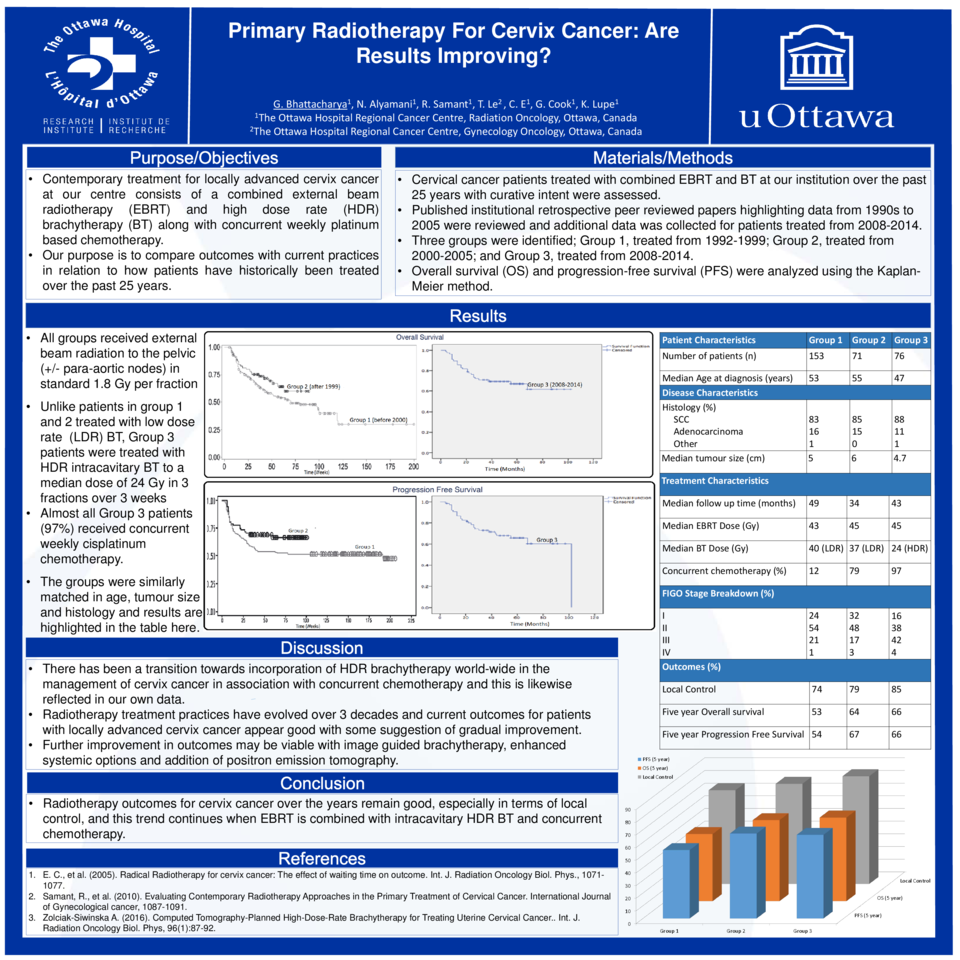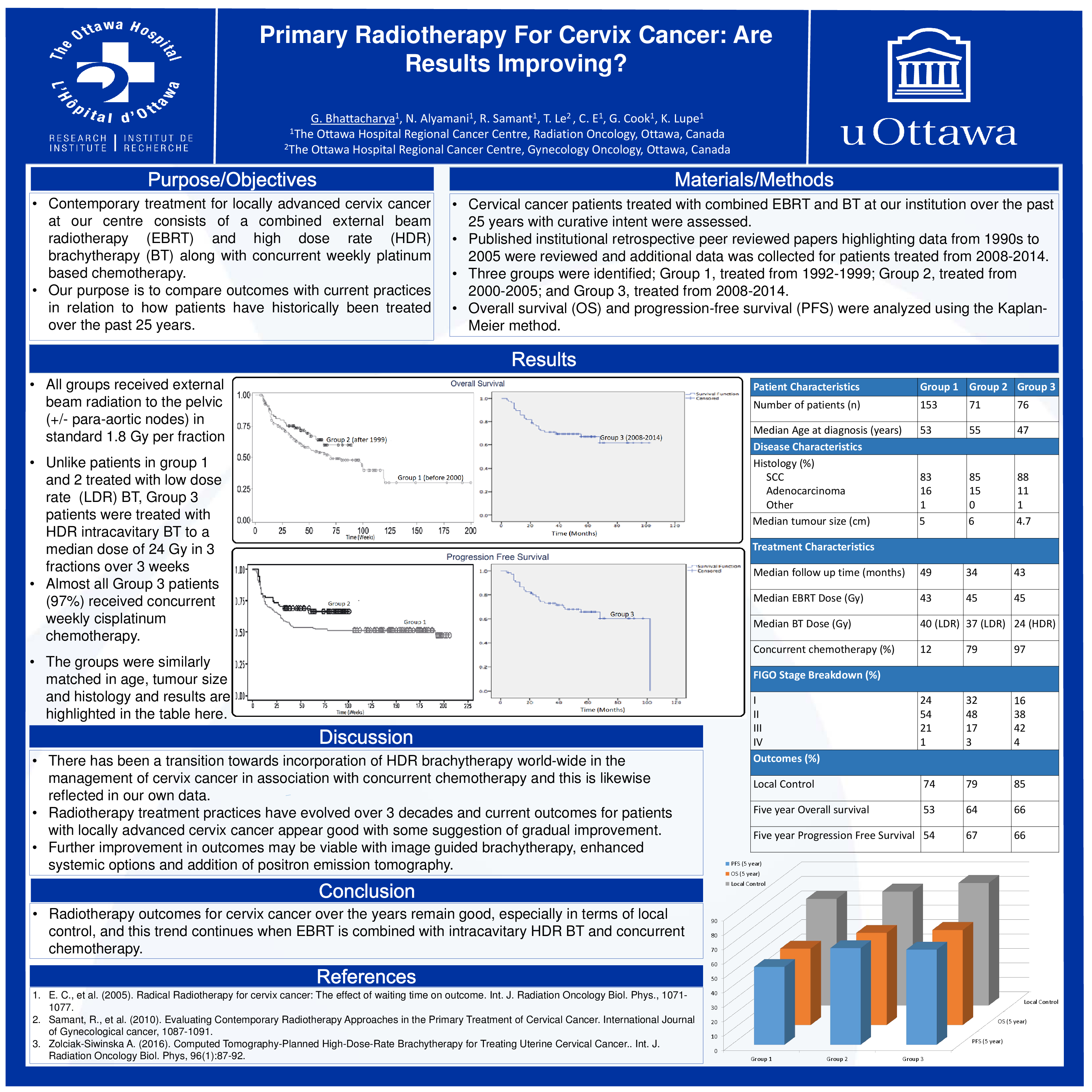Abstract
Purpose/Objectives
Contemporary treatment for locally advanced cervix cancer at our centre consists of a combined external beam radiotherapy (EBRT) and high dose rate (HDR) brachytherapy (BT) along with concurrent weekly platinum based chemotherapy. Our purpose is to compare outcomes with current practices in relation to how patients have historically been treated over the past 25 years.
Materials/Methods
Cervical cancer patients treated with combined EBRT and BT at our institution over the past 25 years with curative intent were assessed. Published institutional retrospective peer reviewed papers highlighting data from 1990s to 2005 were reviewed and additional data was collected for patients treated from 2008-2014. Three groups were identified; Group 1, treated from 1992-1999; Group 2, treated from 2000-2005; and Group 3, treated from 2008-2014.
Results
All groups received external beam radiation to the pelvic (+/- para-aortic nodes) to a median of 45 Gy in standard fractionation. Group 1 patients received a median dose of 40 Gy via low dose rate (LDR) intracavitary BT boost, with only a minority of patients (12%) receiving concurrent chemotherapy. Group 2 patients also received LDR intracavitary BT to a median dose of 37 Gy but the proportion of patients receiving concurrent weekly cisplatinum chemotherapy was 79%. This data was compared with our current cohort of cervix cancer patients (Group 3). All these patients were treated with HDR intracavitary BT to a median dose of 24 Gy in 3 fractions over 3 weeks and 97% received concurrent weekly cisplatinum chemotherapy.
The groups were similarly matched in age, tumour size and histology and results are highlighted in the table below. All figures are quoted in order of Group 1, Group 2 and Group 3 respectively. Stage distribution was as follows: Stage IB- 24%, 32% and 16%; Stage II- 54%, 48% and 38%; Stage III- 21%, 17% and 42% and Stage IV- 1%, 3% and 4%. Five year overall survival estimates were 53%, 64% and 66% with 5 year progression free survival being 54%, 67% and 66% respectively. Finally 5 year local relapse free survival was 74%, 79% and 85%.
Conclusions
Radiotherapy outcomes for cervix cancer over the years remain good, especially in terms of local control, and this trend continues when EBRT is combined with intracavitary HDR BT and concurrent chemotherapy.





